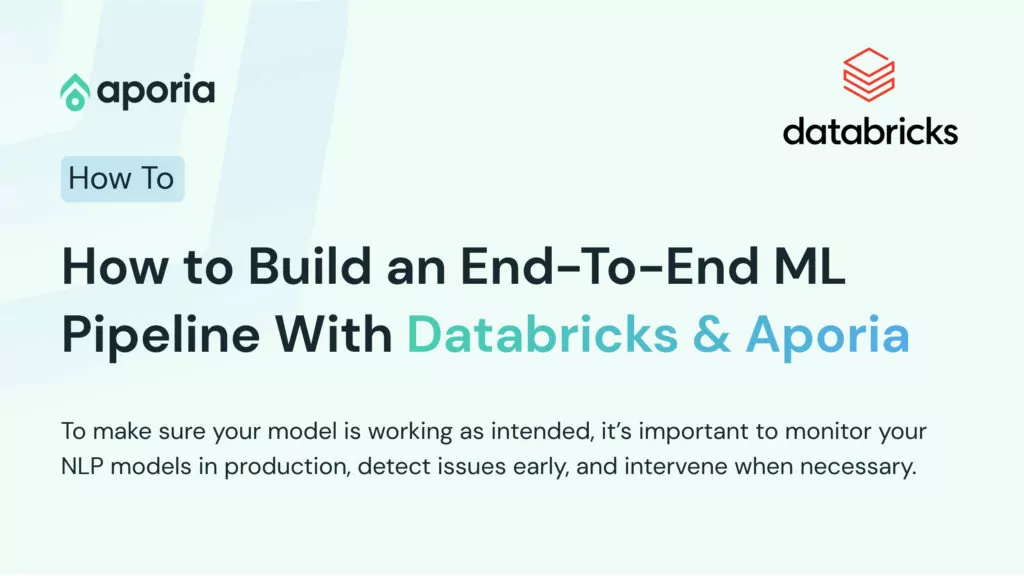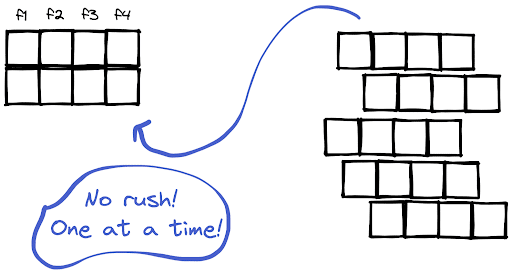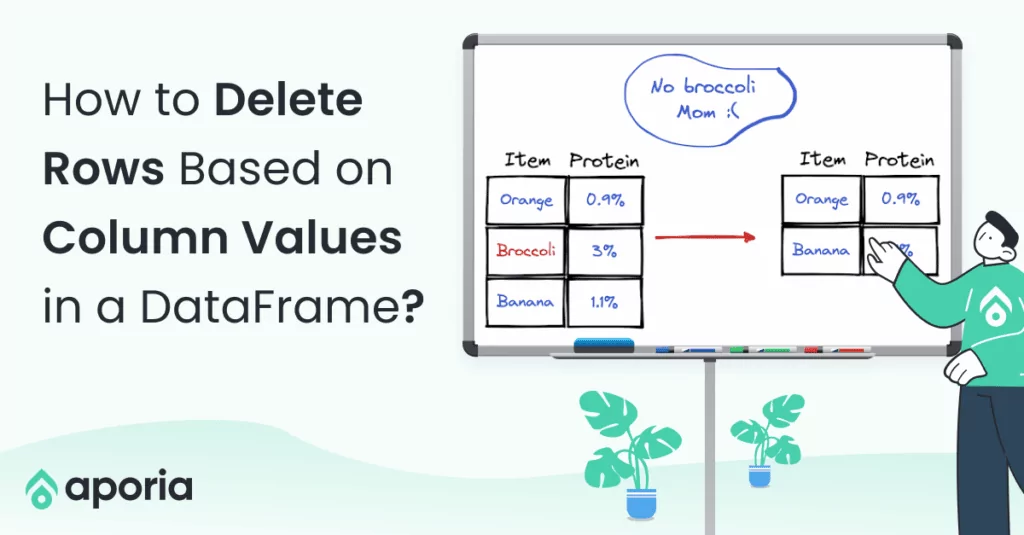
How to Build an End-To-End ML Pipeline With Databricks & Aporia
This tutorial will show you how to build a robust end-to-end ML pipeline with Databricks and Aporia. Here’s what you’ll...
Aporia has been acquired by Coralogix, instantly bringing AI security and reliability to thousands of enterprises | Read the announcement
DataFrame is a two-dimensional data structure, which consists of labeled rows and columns. Each row can be considered as a data point or observation, and the columns represent the features or attributes of the data points.
We can create a DataFrame by stacking data points (i.e. appending one row at a time). In this short how-to article, we will learn how to perform this task for Pandas and PySpark DataFrames.

We can use the loc method to append rows to a DataFrame. The number of values we provide must match the number of columns in the DataFrame.
Consider we have a list of names and a list of scores. We want to create a DataFrame from the values in these lists. It will be a DataFrame with two columns: Names and Score. The first step is to create an empty DataFrame with two columns. Then, we append rows in a for loop.
# import Pandas
import pandas as pd
# Python lists
names = ["John", "Jane", "Abby", "Matt"]
scores = [80, 94, 87, 85]
# Create empty DataFrame
df = pd.DataFrame(columns=["Name", "Score"], dtype="int")
# Append rows
for i in range(len(names)):
df.loc[i] = [names[i], scores[i]]The for loop takes the first items in both lists and appends as the first row to the DataFrame, and then the second ones, and so on.
We can add new rows to a DataFrame by using the union function, which is also used for combining DataFrames with the same schema. Before a row is appended to the DataFrame, it needs to be converted to a DataFrame. Therefore, this operation is more like appending a DataFrame with one row.
# import libraries and initialize a spark session
from pyspark.sql import SparkSession
from pyspark.sql.types import StructType, StructField, StringType, IntegerType
spark = SparkSession.builder.getOrCreate()
# Python lists
names = ["John", "Jane", "Abby", "Matt"]
scores = [80, 94, 87, 85]
# Create empty DataFrame
schema = StructType([
StructField("Names", StringType()),
StructField("Scores", IntegerType())
])
df = spark.createDataFrame([], schema)
# Append rows
for i in range(len(names)):
row_to_append = [(names[i], scores[i])]
columns = ["Names", "Scores"]
df_to_append = spark.createDataFrame(row_to_append, columns)
df = df.union(df_to_append)
This tutorial will show you how to build a robust end-to-end ML pipeline with Databricks and Aporia. Here’s what you’ll...

Dictionary is a built-in data structure of Python, which consists of key-value pairs. In this short how-to article, we will...

A row in a DataFrame can be considered as an observation with several features that are represented by columns. We...

DataFrame is a two-dimensional data structure with labeled rows and columns. Row labels are also known as the index of...
DataFrames are great for data cleaning, analysis, and visualization. However, they cannot be used in storing or transferring data. Once...

In this short how-to article, we will learn how to sort the rows of a DataFrame by the value in...

In a column with categorical or distinct values, it is important to know the number of occurrences of each value....

NaN values are also called missing values and simply indicate the data we do not have. We do not like...